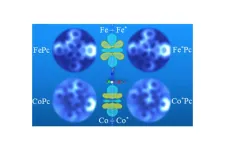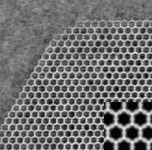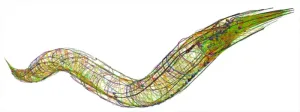(Press-News.org) The cerebellum, a major part of the hindbrain in all vertebrates, is important for motor coordination, language acquisition, and regulating social and emotional behaviors. A study led by Dr. Roy Sillitoe, professor of Pathology and Neuroscience at Baylor College of Medicine and investigator at the Jan and Dan Duncan Neurological Research Institute (Duncan NRI) at Texas Children’s Hospital, shows two distinct types of cerebellar neurons differentially regulate motor and non-motor behaviors during development and in adulthood.
The study, published in Nature Communications, provides the first in vivo evidence supporting the critical role of a specific subset of excitatory glutamatergic neurons in acquiring motor and sensory/emotional behaviors. Further, it shows that neurons present in different regions of the cerebellum contribute differently to motor versus non-motor behaviors during development and in adulthood.
Cerebellar circuits are established by two major types of neurons
The cerebellar nuclei are present in the deepest layer of the cerebellum. These nuclei are encased by an outer highly convoluted sheet of tissue called the cerebellar cortex, which contains most of the other types of neurons in the cerebellum. The cerebellar cortex receives information from most parts of the body and other brain regions. These inputs are integrated by many types of cerebellar neurons and the deep-set cerebellar nuclei – the sole output structures in the cerebellum – then send those signals to the other parts of the brain.
During development, cerebellar injury in preterm infants is often associated with movement disorders, language impairments, and social deficits. However, growing evidence in patients and animal models suggests that the site of injury and its relative severity determines the type and extent of the resulting symptoms.
Unraveling the function of two types of cerebellar neurons
“Our goal in undertaking this study was to determine if excitatory neurons in the cerebellar cortex and cerebellar nuclei act differentially to establish and maintain motor and social behaviors during developmental stages and in adulthood,” lead author, Dr. Meike van der Heijden, a postdoctoral fellow in the Sillitoe lab at the time of the study, said. “Several recent studies have hinted at discrete roles for various cerebellar neuronal types and these findings inspired us to conduct a deeper examination of how relatively few neuron types in the cerebellum contribute to a wide range of motor and non-motor functions. When we embarked on this study, very little was known about how circuit cerebellar-associated behaviors originate, and whether the same neuronal subtypes contribute equally to the acquisition of these diverse behaviors.”
Dr. van der Heijden and graduate student in the Sillitoe lab, Alejandro G. Rey Hipolito, focused on the excitatory glutamatergic neuronal lineages in the cerebellum because it is commonly believed that these neuronal lineages drive the majority of cerebellar behaviors.
Dissecting the functional contributions of these two neuronal lineages in the acquisition of different cerebellar-dependent behaviors requires the use of non-invasive and cell-type- specific manipulations during circuit development. They employed a combination of intersectional genetics and behavioral paradigms which allowed them to address this question with unparalleled precision and specificity in mice models of various developmental ages.
Neurons of the cerebellar cortex control social behaviors whereas cerebellar nuclei neurons regulate motor function
The team found silencing the excitatory lineages in the cerebellar cortex and cerebellar nuclei in early postnatal stages by genetically removing the Vglut2 gene from Atoh1-expressing neurons caused severe impairments in both motor and social vocalization behavior in early prenatal stages. However, by the time these Atoh1mutant mice reach adulthood, natural molecular transitions result in the normalization of the cerebellar cortex function, which to their surprise coincided with the restoration of social behaviors and only mild motor deficits in these mice. This finding indicated that early social deficits and delayed acquisition of normal social behaviors in these mice were likely due to the progressive normalization of the function of cerebellar cortex neurons.
To test if this hypothesis was true, they eliminated neurotransmission from a subset of glutamatergic nuclei neurons using Ntsr1-cre driver. Upon repeating the same behavioral paradigms, they did not observe any social deficits but observed severe motor deficits in early postnatal mice that were fully resolved with age.
“Together, several major novel findings emerged from our experiments,” co-first author, Alejandro Rey Hipolito, said. “First, we were surprised to find that silencing the excitatory neurons did not impair all the cerebellar functions. Second, we observed that glutamatergic neurotransmission from cerebellar cortical versus cerebellar nuclei neurons regulates the acquisition of motor and social behaviors differentially – the cerebellar cortex neurons control the acquisition of social skills whereas the cerebellar nuclei affect the establishment of motor behaviors. Finally, it appears that the brain is able to compensate for some, but not all, perturbations that occur in the developing cerebellum.
“This study has not only led to several important discoveries about the roles of different cerebellar neurons but has opened several interesting questions about the role of inhibitory GABAergic nuclei neurons in compensating for the loss of excitatory glutamatergic neurons and restoring the function, which we intend to explore in the future,” Dr. Sillitoe, added. “Moreover, these findings offer several exciting and new possibilities to regulate specific cerebellar lineages to restore motor and non-motor functions after brain injury and disease.”
Others involved in the study are Linda H. Kim, Dominic J. Kizek, Ross M. Perez,and Tao Lin. They are affiliated with Baylor College of Medicine and the Jan and Dan Duncan Neurological Research Institute
This work was supported by Baylor College of Medicine, Texas Children’s Hospital, The Hamill Foundation, and the National Institutes of Neurological Disorders and Stroke (NINDS), a postdoctoral award from the Dystonia Medical Research Foundation (DMRF) and NINDS, and a postdoctoral award from the DMRF. Research reported in this publication was supported by the Eunice Kennedy Shriver National Institute of Child Health & Human Development of the National Institutes of Health for use of the Cell and Tissue Pathogenesis Core and In Situ Hybridization Core, a part of the BCM IDDRC.
END
Distinct types of cerebellar neurons control motor and social behaviors
2023-05-15
ELSE PRESS RELEASES FROM THIS DATE:
Seeing electron orbital signatures
2023-05-15
No one will ever be able to see a purely mathematical construct such as a perfect sphere. But now, scientists using supercomputer simulations and atomic resolution microscopes have imaged the signatures of electron orbitals, which are defined by mathematical equations of quantum mechanics and predict where an atom’s electron is most likely to be.
Scientists at UT Austin, Princeton University, and ExxonMobil have directly observed the signatures of electron orbitals in two different transition-metal atoms, iron (Fe) and cobalt ...
Commercial investors shift perspective of coastal properties in face of climate change
2023-05-15
UNIVERSITY PARK, Pa. — Investors in commercial real estate are rethinking the values of coastal properties exposed to flood risk — even in northern U.S. locales that haven’t suffered flood damage, according to researchers. This shift in perspective has implications for investors and developers alike as they determine the value of coastal properties amid a changing climate.
Eva Steiner, associate professor of real estate and King Family Early Career Professor in Real Estate in the Penn State Smeal College of Business, and her co-authors published these findings recently in Real Estate Economics.
Steiner and ...
Luo to receive NSF funding for collaborative research: catholyte molecular design for non-aqueous mg-organic hybrid redox flow batteries
2023-05-15
Chao Luo, Assistant Professor, Chemistry and Biochemistry, is set to receive funding from the National Science Foundation for the project: "Collaborative Research: Catholyte Molecular Design For Non-Aqueous Mg-Organic Hybrid Redox Flow Batteries."
Luo is proposing a new organic molecule structure design concept for redox flow batteries, which are promising for grid-scale energy storage. The research outcomes will afford low-cost, abundant, sustainable, and high-performance organic catholyte materials for non-aqueous Mg-organic hybrid redox flow batteries.
His goal is to design, synthesize, and characterize core-shell ...
Huneke wins grant to research lesbians in the Third Reich
2023-05-15
Samuel Clowes Huneke, Assistant Professor, History and Art History, has been awarded a Sharon Abramson Research Grant from the Holocaust Educational Foundation of Northwestern University. The award will enable him to complete research for his forthcoming book on lesbians in Nazi Germany.
For many decades after the end of World War II, the fates of queer women were ignored. Because female homosexuality had not been criminalized explicitly, historians long argued that lesbians were not persecuted by the Nazi regime.
In contrast, Huneke’s book, which is under advanced contract with Aevo-University of Toronto Press, argues that queer women under Nazism faced ...
Porous crystals made from plant extracts purify water from pharmaceutical pollutants
2023-05-15
Researchers from Stockholm University have developed porous crystals made from pomegranate extract to capture and degrade pharmaceutical molecules found in local municipal wastewater. The research is published in the scientific journal Nature Water.
Pharmaceutical compounds affect the human body to improve our health, but they can also have unintentional adverse effects for the wellbeing of wildlife. Hence wastewater treatment plants are facing the challenge of removing emerging organic contaminants (EOCs) such as active pharmaceutical ingredients, and therefore ...
Butterfly tree of life reveals an origin in North America
2023-05-15
About 100 million years ago, a group of trendsetting moths started flying during the day rather than at night, taking advantage of nectar-rich flowers that had co-evolved with bees. This single event led to the evolution of all butterflies.
Scientists have known the precise timing of this event since 2019, when a large-scale analysis of DNA discounted an earlier hypothesis that pressure from bats prompted the evolution of butterflies after the extinction of dinosaurs.
Now, scientists have discovered where the first butterflies originated ...
From molecular to whole-brain scale in a simple animal, study reveals serotonin’s effects
2023-05-15
Because serotonin is one of the primary chemicals the brain uses to influence mood and behavior, it is also the most common target of psychiatric drugs. To improve those drugs and to invent better ones, scientists need to know much more about how the molecule affects brain cells and circuits both in health and amid disease. In a new study, researchers at The Picower Institute for Learning and Memory at MIT working in a simple animal model present a comprehensive accounting of how serotonin affects behavior from the scale of individual molecules all the way to the animal’s whole brain.
“There have been major challenges ...
Assessment of sociodemographics and inflation-related stress
2023-05-15
About The Study: This analysis of U.S. Census Bureau survey data found that rising inflation has become a significant source of stress, especially among women and those who were socioeconomically more vulnerable.
Authors: Cary Wu, Ph.D., of York University in Toronto, is the corresponding author.
To access the embargoed study: Visit our For The Media website at this link https://media.jamanetwork.com/
(doi:10.1001/jamanetworkopen.2023.13431)
Editor’s Note: Please see the article for additional information, including other authors, author contributions and affiliations, ...
Population-based estimates for the prevalence of multiple sclerosis in the US
2023-05-15
About The Study: In this national population-based cohort study of multiple sclerosis (MS) prevalence, researchers found that the distribution of MS in the United States has become more racially and ethnically diverse. White individuals continued to have the highest prevalence of MS followed by Black individuals, individuals from other races, and Hispanic individuals.
Authors: Mitchell T. Wallin, M.D., M.P.H., of the University of Maryland School of Medicine in Washington, D.C., is the corresponding author.
To access the embargoed study: Visit our For The Media website at this link https://media.jamanetwork.com/
(doi:10.1001/jamaneurol.2023.1135)
Editor’s ...
Risk of Parkinson disease among service members at Marine Corps Base Camp Lejeune
2023-05-15
About The Study: This study of 340,000 service members found that the risk of Parkinson disease was 70% higher in veterans who were stationed at Marine Corps Base Camp Lejeune, North Carolina, during 1975-1985 when the water supply was contaminated with the solvent trichloroethylene and other volatile organic compounds. The findings suggest that exposure to trichloroethylene in water may increase the risk of Parkinson disease; millions worldwide have been and continue to be exposed to this ubiquitous environmental contaminant.
Authors: Samuel M. Goldman, ...



